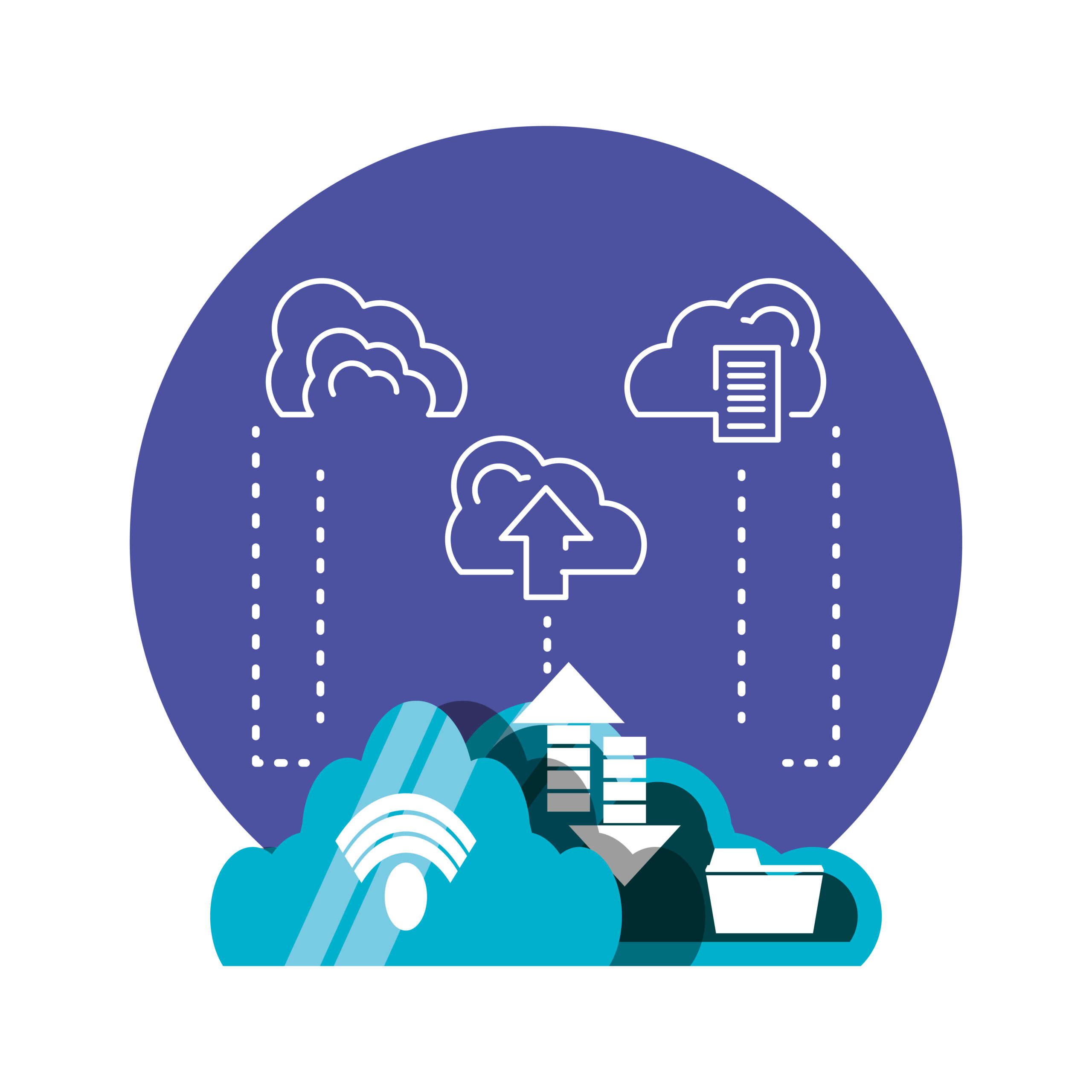As a technology professional, you will be aware of emerging trends that are transforming the capabilities of mobile and Internet of Things (IoT) applications. One such innovation is multi-access edge computing, which involves deploying decentralized IT infrastructure and services at the edge of the network. This allows data processing and content delivery to occur closer to end-users, providing tangible benefits. Leading telecoms firms like SK Telecom and NTT Docomo have already deployed edge computing solutions and are realizing performance improvements.
This article will provide an overview of multi-access edge computing deployments, explaining the technology and its advantages. It will also highlight examples and use cases demonstrating how edge computing is enabling new mobile and IoT capabilities. For any technology leader interested in leveraging edge computing, this article will deliver valuable insights.
What Is Multi-Access Edge Computing?
Multi-access edge computing (MEC) refers to a network architecture that brings computing capabilities and IT service environments closer to mobile subscribers. MEC enables cloud-computing capabilities and an IT service environment at the edge of the network, within the Radio Access Network (RAN), and close to mobile subscribers.
MEC allows for the hosting of applications and services at the edge of the network, reducing latency and congestion, and improving the overall user experience. By processing data closer to the user, MEC can deliver low latency for applications that require real-time network access.
Key Benefits of MEC
MEC delivers several key benefits:
- Low latency: By processing data at the edge of the network, MEC can achieve ultra-low latency for applications that require real-time access to radio network information. This enables new capabilities like augmented reality, virtual reality, and real-time automation.
- Reduced congestion: By processing data at the edge, MEC avoids having to send all data to a central data center, reducing congestion in the core network.
- Location awareness: MEC enables location-based applications by providing location information and radio network metrics. This allows for applications tailored to a user’s location and context.
- Improved reliability: By processing critical data at the edge, MEC ensures application performance even if the connection to core network components is disrupted. This results in a more resilient overall system.
- New revenue opportunities: MEC creates opportunities for mobile operators and third parties to deploy innovative edge computing applications that can generate new revenue streams. Various vertical industries can benefit from MEC, including automotive, healthcare, and industrial.
MEC is an exciting new technology that can transform mobile networks by bringing cloud computing capabilities closer to the end user. By deploying MEC solutions, operators and enterprises can build tailored applications that leverage the benefits of MEC to improve performance, enable new capabilities, and open up new revenue opportunities. The future of mobile networks is at the edge.
Benefits of Multi-Access Edge Computing Deployments

Multi-access edge computing (MEC) provides significant benefits for mobile network operators (MNOs) and their customers. By deploying MEC solutions, MNOs can reduce latency, improve application performance, and enhance the end-user experience.
Reduced Latency
- With MEC, data processing occurs at the edge of the network, closer to the end-user. This proximity significantly reduces latency, the time it takes for data to travel from its source to its destination and back. Reduced latency is essential for 5G networks and real-time applications like virtual reality, autonomous vehicles, and remote surgery.
Improved Application Performance
- By processing data locally at the edge, MEC reduces the volume of data that must traverse the network core. This minimizes bandwidth constraints and congestion, enabling higher throughput and improving the performance of applications. Locally available computing and storage resources also allow for more efficient content caching and distributed data storage.
Enhanced End-User Experience
- With lower latency and improved application performance, MEC delivers an enhanced experience for end-users. Web pages and videos load faster. AR/VR experiences are more seamless and immersive. The response times of connected vehicles and other IoT devices are quicker. Overall, end-users benefit from a more responsive network with access to innovative, low-latency services.
In summary, MEC deployments offer substantial advantages for MNOs looking to optimize their 5G networks and for end-users demanding a high-performance, cutting-edge mobile experience. By enabling local data processing, MEC paves the way for new capabilities that transform how we interact with the world around us.
Real-World Examples of MEC Deployments
SK Telecom
- SK Telecom, South Korea’s largest wireless carrier, has deployed MEC nodes across Seoul to reduce latency for mobile gaming and live-streaming applications. With MEC, SK Telecom has achieved single-digit millisecond latency for select applications. SK Telecom also plans to use MEC for smart city and autonomous vehicle applications.
NTT Docomo
- NTT Docomo, Japan’s largest mobile operator, launched an MEC platform in 2016 to deploy MEC nodes across Japan. NTT Docomo is using MEC to deliver low latency connectivity for live streaming, AR/VR, and autonomous industrial applications. NTT Docomo’s MEC platform also allows third-party developers to deploy their own MEC applications.
Vodafone
- Vodafone, a major European telecom, has deployed MEC nodes at over 60 locations across Germany, Italy, and Spain. Vodafone is using MEC to reduce latency for enterprise applications like smart video analytics, connected vehicles, and mobile gaming. Vodafone has achieved a latency of just 10 milliseconds for select MEC applications.
Verizon
- Verizon, the largest wireless carrier in the U.S., launched an MEC platform in 2018 and has deployed MEC nodes in over 20 cities. Verizon is using MEC to deliver ultra-low latency connectivity for mobile gaming, AR/VR, live streaming, and autonomous vehicle applications. Verizon plans to deploy over 1,000 MEC nodes across the U.S. in the coming years to enable new types of latency-sensitive applications.
In summary, major telecom operators around the world have started deploying MEC solutions to bring data processing closer to end-users. By deploying MEC nodes at strategic locations in their networks, operators can achieve single-digit millisecond latency for select applications. MEC deployments today are enabling new types of applications like mobile gaming, live streaming, AR/VR, smart cities, and autonomous vehicles. As more operators launch MEC platforms, MEC is poised to transform wireless networks and enable new capabilities that were not previously possible.
Challenges and Limitations of Multi-Access Edge Computing
Multi-access edge computing deployments are complex to implement and manage. Operators face several challenges in deploying and operating multi-access edge computing solutions.
1. Infrastructure requirements
Multi-access edge computing requires substantial investments in infrastructure to deploy edge data centers and networking equipment. Operators need to deploy edge data centers in locations close to end users to achieve low latency. They also need high-bandwidth networks to connect the edge data centers to central data centers and the internet. The infrastructure requirements can be cost-prohibitive for many operators.
2. Management complexity
Managing distributed edge infrastructure and ensuring high availability and reliability is complex. Operators need to monitor the infrastructure and applications in edge data centers and central data centers. They also need to implement mechanisms to migrate applications and data between edge and central data centers as needed. The management complexity can overwhelm the limited resources of many operators.
3. Application challenges
Not all applications are suitable to run on multi-access edge computing infrastructure. Applications need to be designed to run in a distributed manner across the edge and central data centers. They also need to handle intermittent connectivity and bandwidth constraints between edge and central sites. Most existing applications are not designed for multi-access edge computing deployments and would require significant re-engineering to work. This can limit the applications that can benefit from multi-access edge computing in the short term.
Multi-access edge computing brings substantial benefits but also faces significant challenges around infrastructure, management complexity, and application requirements. Operators need to carefully evaluate the costs and complexities of multi-access edge computing deployments to determine if the benefits outweigh the challenges for their specific use cases and target applications. With technology and standards improvements over time, multi-access edge computing deployments may become more streamlined and feasible for a broader range of applications.
The Future of Multi-Access Edge Computing Deployments
Multi-access edge computing (MEC) deployments allow data processing to occur at the edge of the network, closer to the source of the data. As MEC technology and infrastructure continue to advance, telecom providers are investing heavily in edge computing deployments to reduce latency, improve application performance, and enable new capabilities.
1. Reduced Latency
- By moving data processing closer to the source, MEC deployments can significantly reduce latency – the time delay between when data is transmitted and received. Lower latency is critical for many applications like virtual reality, autonomous vehicles, and smart cities. As more connected devices come online, the demand for real-time data processing and reduced latency will drive further MEC investments.
2. Improved Application Performance
- MEC deployments also improve the performance of applications by moving compute resources closer to the end user. This can enhance experiences like streaming high-definition video with no buffering or lag. MEC will enable new capabilities for augmented reality applications, drone control, and more.
3. New Capabilities
- In addition to enhancing existing applications, MEC deployments will enable entirely new capabilities. For example, MEC could allow vehicles to communicate with smart infrastructure like traffic lights to improve traffic in cities. MEC also enables distributed AI and machine learning at the edge, allowing devices to become smarter over time.
MEC represents an important trend that will reshape network infrastructure and enable new innovative services. While telecom providers have invested heavily in MEC, continued progress requires overcoming challenges related to standardization, security, and managing workloads across edge sites. If these challenges can be addressed, MEC may revolutionize how we connect people and devices.
To Sum It All Up
As we have seen, multi-access edge computing is transforming the capabilities of mobile and IoT technologies. By deploying edge data centers at the periphery of networks, telcos like SK Telecom and NTT Docomo enable data processing and analysis to occur much closer to end-users. This greatly reduces latency as data no longer needs to make long round-trips to centralized data centers. It also improves reliability by keeping data processing local. With more deployments on the horizon, you can expect edge computing to bring higher performance, lower latency, and exciting new experiences to your mobile devices and IoT applications. The potential of this technology is vast, and we are only just beginning to glimpse it.
More Stories
KT Cloud Accelerates Digital Growth with New High-Tech Data Center in Yecheon-Gun
KT Cloud new data center in Yecheon-gun marks a key public-private effort with Gyeongsangbuk-do and Yecheon County.
Microsoft Cloud Momentum Fuels AI Growth Across Indonesia and Malaysia
Microsoft Cloud services expands strategically into Indonesia and Malaysia to reshape Southeast Asia’s technological landscape.
EastWest Bank Embraces Temenos SaaS to Propel Digital Transformation
EastWest Bank leads digital transformation in financial services through its new partnership with Temenos. The collaboration uses Temenos’ advanced Software-as-a-Service (SaaS) solution.
Confluent Unifies Real-Time and Historical Data to Power Next-Gen AI and Analytics
Confluent has made major progress by upgrading its Confluent Cloud platform. These enhancements aim to unify data streams for advanced AI applications.
AI Synergy: Exabeam and Vectra AI Forge Unified Front Against Evolving Cyber Threats
The alliance between Exabeam and Vectra AI marks a major cybersecurity advancement. This strategic partnership merges top-tier technologies from both companies to enhance defenses against complex cyberattacks.
ChatGPT Deep Research Now Integrates with Dropbox and Box for Enhanced Data Access
ChatGPT Deep Research integration with Dropbox and Box enhances data access for users enabling them to link cloud storage accounts directly to Deep Research.


